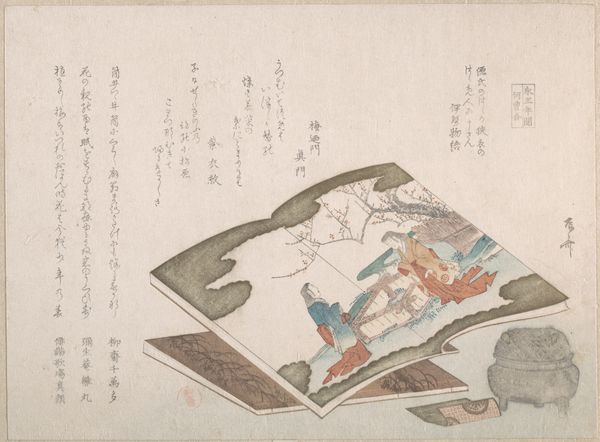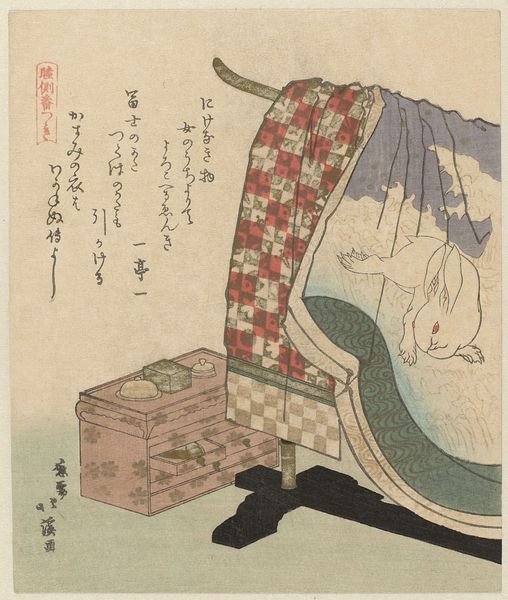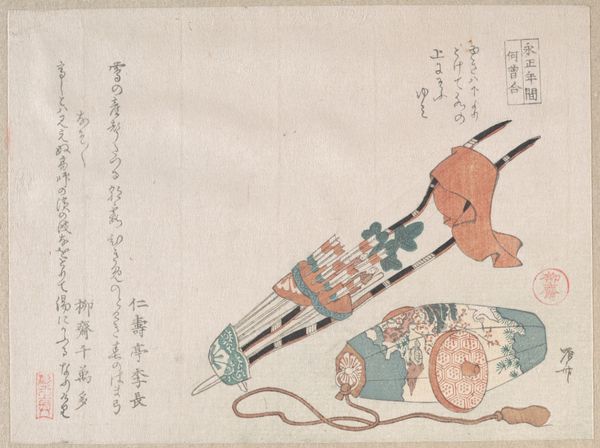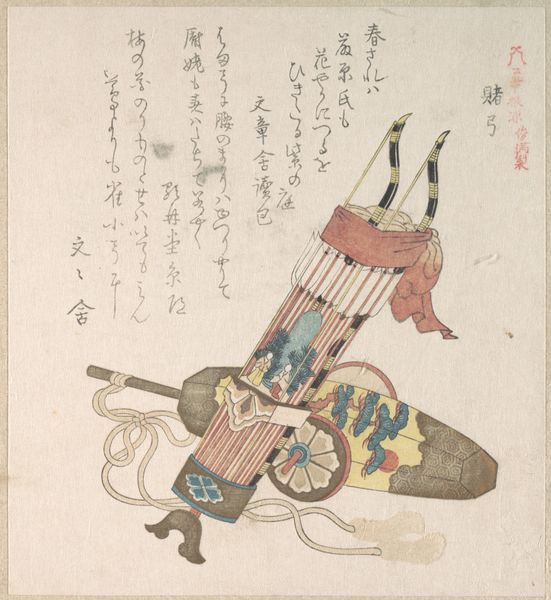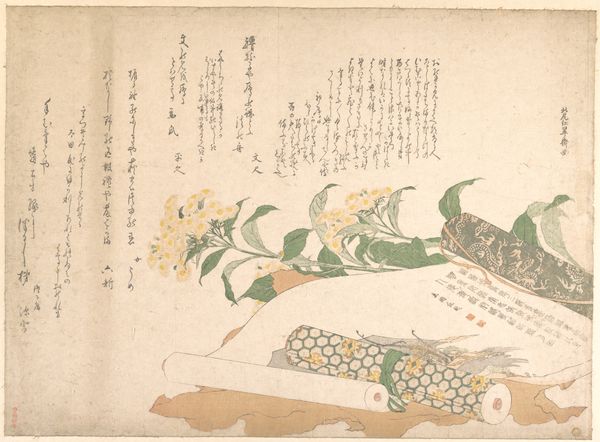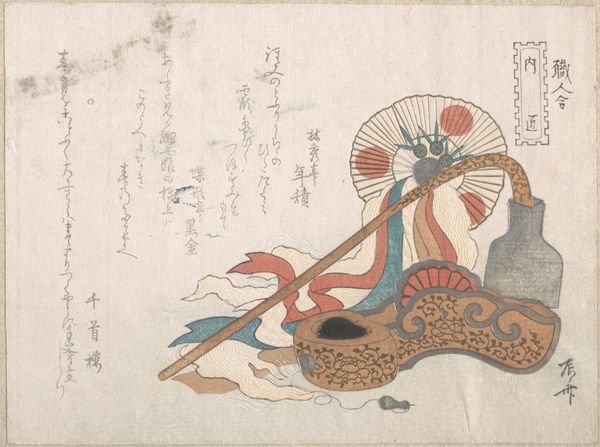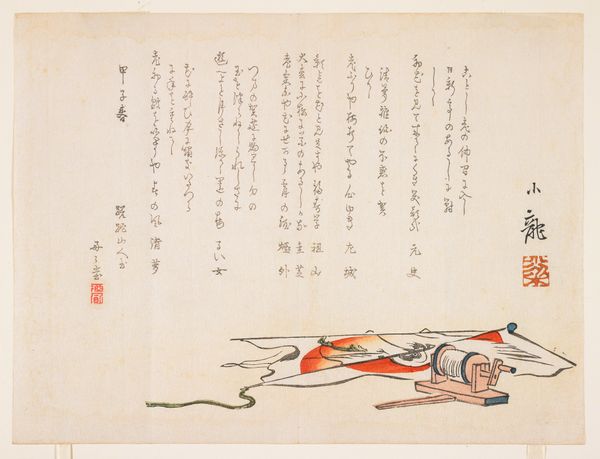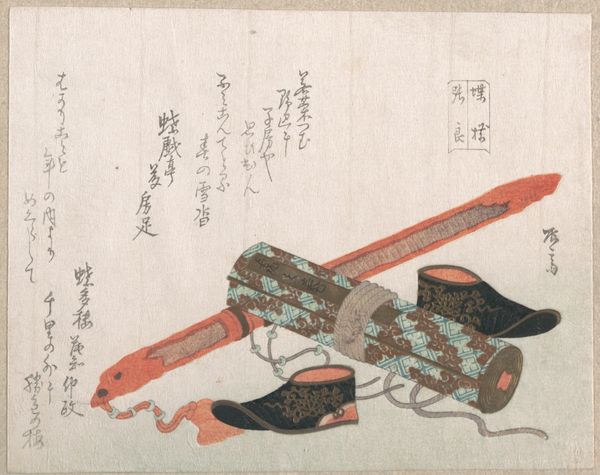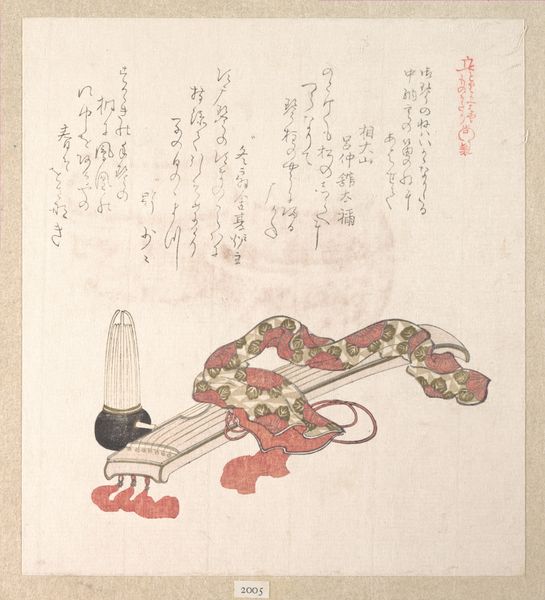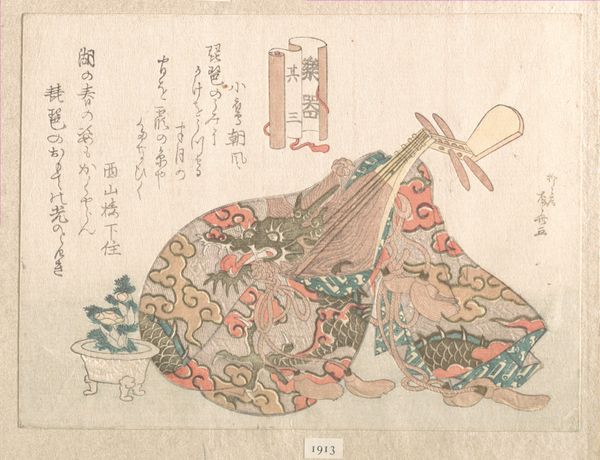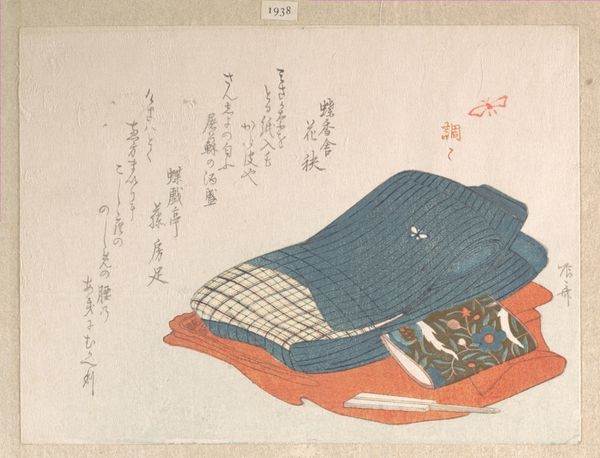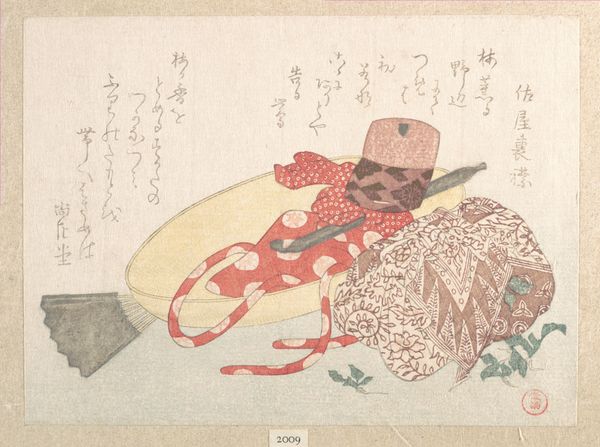
print, textile, paper, ink
#
narrative-art
# print
#
asian-art
#
landscape
#
textile
#
ukiyo-e
#
paper
#
ink
Dimensions: 14 7/8 x 20 1/4 in. (37.8 x 51.4 cm) (image, sheet)
Copyright: Public Domain
Curator: Here we see "Spring Mist (Biwa player's costume)," an early 19th-century print, made with ink and colors on paper. It comes from the creative world of Niwa Tokei, and is held in the collection of the Minneapolis Institute of Art. What’s your first take? Editor: A whisper of sadness, really. It feels less like a celebratory spring frolic and more like… longing. The delicate lines of the discarded robe suggest a human presence, yet absence. There’s a haunting intimacy in that absence, almost like encountering a ghost. Curator: That sense of melancholy isn’t entirely out of place, considering its context. It falls into the category of *ukiyo-e*, floating world art. Ukiyo-e often dealt with transient beauty, fleeting pleasures… but also, inherently, the recognition that these things are temporary, and often come with a price. Editor: Right, that acceptance of impermanence, it seeps through everything, doesn’t it? Even the color palette seems muted, resigned. What's fascinating, though, is the deliberate composition – the cascading folds of the robe mimicking the flow of a misty landscape. Are we meant to find solace in this melancholic acceptance, perhaps? Curator: It’s interesting that you point that out. These kinds of prints, even when depicting seemingly everyday objects like a musician’s robe, were often steeped in literary and historical references that added layers of meaning for contemporary viewers. Editor: So it’s more than just a pretty picture of a discarded garment! I feel the weight of all the unseen narratives—tales of transient artistry, the ephemeral music it accompanied, whispered longings lost in spring's embrace... and also makes me wonder how something so obviously intimate was thought of and presented as art for consumption. Curator: Precisely! Consider this work in relationship to other similar *ukiyo-e* objects of that era and from similar hands and lineages, and you get a small glimpse into its significance in 19th century cultural and economic practices in Japanese high society. Editor: So, it's less about the lost garment, or what is written above, and more about the system it's part of? Maybe this explains the distance I felt between the art and the intimate act I projected on to it. Thanks for clearing that up! Curator: It has been my pleasure. Editor: Indeed, I won’t look at discarded clothes in quite the same way!
Comments
No comments
Be the first to comment and join the conversation on the ultimate creative platform.
